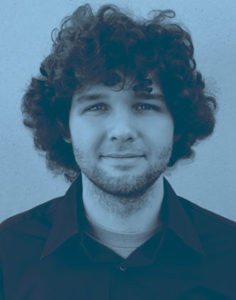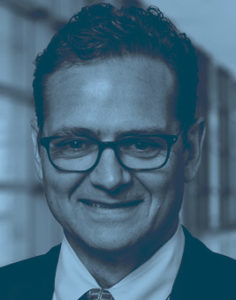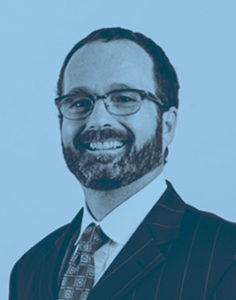
How People Change
To change healthcare, we must change people.
The healthcare system, after all, is made of human beings. Human beings can be convinced to change when they understand that the pain of the work now will pay off in the future. For each new thing, we make this calculation.
Every day, healthcare leaders are asking the 16 million Americans who work in the industry to change what they do to prepare their organizations for incredible pressure.
Leaders ask nurses trained to touch patients to use telemedicine instead. They ask doctors who are accustomed to calling the shots to act like hospital employees. When talking to the public, they ask communities that depend on the security of their hospital to trust larger systems when local facilities sell to them.
In other words, people have a deep, emotional response to the changes impacting healthcare. So healthcare leaders must speak to people’s emotions to get them to change.
The science of personal change.
Researchers are just now cracking the behavioral science behind personal change. Still, the little we know can inform how healthcare leaders approach work that requires new behavior from employees, physicians, colleagues and superiors.
Government organizations, too, are researching the science of personal change. In 2010, the National Institute of Health launched the Society of Behavior Change (SOBC) to bridge the gap between clinical and field research on the topic.
So far, the SOBC’s work has confirmed that getting people to change behavior is incredibly difficult – even when their behavior is killing them. According to research from the Centers for Disease Control and Prevention, up to 40 percent of all premature deaths in America could be prevented through behavioral change. But it turns out, even the threat of an early death is not powerful enough to motivate people to change their behavior.
Here’s what we do know.
People can change, and that change can be positive. And often, willingness to change varies depending on perception.
For example, people trying to drive change in others must account for factors such as social norms. “You can think of norms kind of like an advertisement,” says Gregg Sparkman, a researcher in Stanford University’s psychology department. He says that when we see most people doing something, we assume it must be a good idea, or at least, relatively harmless.
“The status quo has a lot of psychological momentum,” says Sparkman. “In fact, norms that most people don’t like maintain really well even though most people don’t like them. It’s a strong force.”
But it’s a force that can be overcome. In a recent study, Sparkman and colleagues investigated whether they could influence people’s behavior and encourage them to act against a current norm – specifically, eating meat. First, they tried to do this by posting information in a Stanford dining hall that explained the cons of meat eating. It didn’t work.
Then, they tried something else. At a cafe, they gave patrons a coupon for a discount on lunch if they would answer a few survey questions. In some surveys people were informed that meat consumption was on the decline, then asked, “Why do you think this is?” People who saw this question were roughly twice as likely to order a meatless lunch than those in the control group.
In other words, thinking differently about the same information can drive different outcomes. In the second example, researchers didn’t explain why meat eating is bad. Instead, they gave people room to make assumptions about why a norm – eating meat – is changing.
Sparkman says a couple things are happening here. One is that when people learn others are changing, they infer that it’s something worth changing for. “People have a lay theory that change isn’t easy, so they associate it with importance.”
The other, he says, is that you can get people to change their behavior when they think about the future – that is, what you’re doing may not be the norm yet, but “you head in the direction where the norm will go.” In other words, people will change to get ahead of the game.
To get ahead of the game, whether for personal health or as part of a healthcare system, people must understand how change affects the future.
Change and time
Part of the art here is to get people to pan out of the current moment, putting change in the context of a greater scope of time.
This happens every day in patient care, according to neurologist and headache specialist Dr. Jan Lewis Brandes, founder of Nashville Neuroscience Group and assistant clinical professor in Vanderbilt University School of Medicine’s neurology department.
In fact, communicating the possibility of change to patients is one of the true joys of practicing medicine, she says. She argues that medicine is, essentially, change. Patients often seek care because they have a problem and need to do something different to heal.
Yet incentivizing life-saving change can be incredibly difficult, especially for patients with chronic diseases, who can struggle to see how a collection of decisions could drastically impact the course of their lives.
“It’s my role as a physician to try explain medical conditions, in terms that are meaningful to someone who may not have had the opportunity for health literacy,” Brandes says.
She argues that the practice of medicine is much more than diagnosing and prescribing treatment, then sending patients home. And yes, metrics are critical, but physicians must take the time to help patients understand them. She says patients need to know how complying with medication and improving health habits today can give them more time tomorrow and a better quality of life.
Brandes recalls a middle-aged patient interested in a clinical trial for migraines, whose blood pressure was found to be out of control when he enrolled. She had learned his story – that he had a large, loving family including a daughter who was a first-generation college student. She remembers having a long conversation with him, during which she explained how his failure to take his medication could jeopardize his ability to see her graduate. “I said, ‘You have a good job. You have a family who loves you, and you love them. And you need to be there for them. And keeping your blood pressure under control is part of how you can avoid stroke and heart attack in your future.” That resonated.
After that, she says, “He went back on his meds, he finished the trial, he’s done beautifully, all his risk factors for stroke are now addressed, and we got him a primary care doctor.”
But to modify his behavior, her patient had to think about change as an inconvenience now that would benefit his future – or better yet, the future of his family.
The same framing works for physicians, too, says Dr. Arick Forrest, president of The Ohio State University Physicians and vice dean of clinical affairs for The Ohio State University College of Medicine, a 2,000-faculty academic medical center in Columbus.
He recalls working with physicians to navigate the system’s EMR. Often, they’ve learned their own way of doing it, he says. Getting them to change takes more than just promising saved time.
“They’ll argue they don’t have an hour to spend with an IT expert, but you have to change how they look at things,” Forrest says. “I’ll say, ‘If spending the hour now can save you a half hour every day for the rest of your practice life, wouldn’t that be worth it? That’s another half hour you can spend with your family.’”
To get people to change, he says, “They have to understand the result of their effort is greater than the cost involved. And the cost isn’t just capital cost – it’s the cultural cost, and their time.”
Much like patients grappling with chronic diseases, clinicians within a system need time and one-on-one conversations to understand why a change is happening. “Some of the biggest wins I’ve had happen when people come up to me after I present on something, and instead of saying, ‘Let’s go through this really quickly,’ I’ll say, ‘Why don’t you come spend half an hour with me so you know it well enough to tell other people what it means?’”
The beauty of carving out this time with people is that often, they become your change agents, says Forrest. “You need them. Spend enough time one-on-one. Because if I’m the only one delivering the message, it’ll never work.”
Change and beliefs
To change people at an individual level, you must tap into their belief system. In a 2003 article for the McKinsey Quarterly, authors cite the work of Stanford social psychologist Leon Festinger, who studied the phenomenon called cognitive dissonance that happens when people find their actions in conflict with their beliefs. The article continues:
“The implication of this finding for an organization is that if its people believe in its overall purpose, they will be happy to change their individual behavior to serve that purpose— indeed, they will suffer from cognitive dissonance if they don’t. But to feel comfortable about change and to carry it out with enthusiasm, people must understand the role of their actions in the unfolding drama of the company’s fortunes and believe that it is worthwhile for them to play a part.”
There is perhaps no greater unfolding drama than the one happening within healthcare organizations.
But key elements are missing in the story that most leaders are telling, according to Dr. Jordan Asher, senior vice president and chief physician executive at Sentara Healthcare, an integrated, not-for-profit system of 12 hospitals in Virginia and northeastern North Carolina.
Those missing factors, he says, are the ones that motivate physicians. Hospital administrators may be under pressure to meet financial benchmarks but those, alone, don’t tap into doctors’ belief systems.
“Think about art and a canvas,” Asher says. “An artist isn’t necessarily drawing just to sell a piece of work. In healthcare, when we talk about financials only, we’re sort of couching what providers do within the context of doing it for financial incentives as the only driver – and I don’t think that’s true. Just like most artists, there are many reasons we do what we do, and every canvas is different.”
Instead, healthcare workers are much more likely to change when doing so helps them connect with a larger purpose or bigger story.
This goes for health system leaders, too. For example, David Spillers, CEO of the northern Alabama-based 2,200-bed, 15,000-employee Huntsville Hospital Health System, remembers a former mentor who was an extremely successful administrator. But when physicians resisted his leadership style, the mentor decided to change his philosophy from top-down, command-and-control to a way of being that would keep the hospital running smoothly without alienating people.
When the mentor was initially surprised by physician opposition, Spillers told him: “It’s not that you haven’t been successful. It’s that they don’t like the way you’ve been successful. They’re tired of being dictated to.”
He says his mentor had no immediate financial incentive to change, but he was uncomfortable with the legacy he realized he was leaving.
“He had no desire to end a great career with opposition from the physicians whom he, by and large, respected. He had a compelling reason to want to change.”
When he eventually retired, he did so with tremendous support. Said Spillers: “He wondered why he hadn’t done it that way all along because, he said it was a lot more fun.”
Joy in change
That is perhaps the other fundamental part about individual change – besides being hard, it can be incredibly rewarding, both for the person who changes and the one who inspires it.
In the case of medicine – the interaction at the basis of healthcare – inspiring change can save lives.
“I can’t tell you how many times I’ve driven home just from a regular day at the office and thought, ‘Life does not get better than this,” says Dr. Brandes. “The lovely part of being a physician is that patients allow you to enter their lives, and you have the opportunity to open their eyes to ideas about treatment they might not have chosen without talking to you. You have the chance to offer people strategies that can impact their ability to not only get better, but also to change the course of the rest of their lives.”





